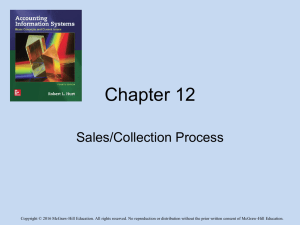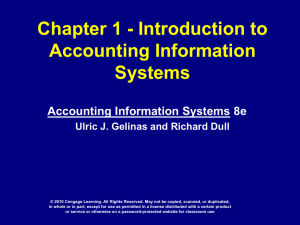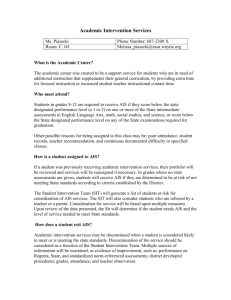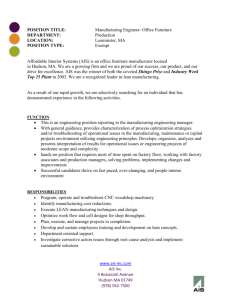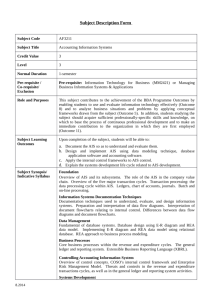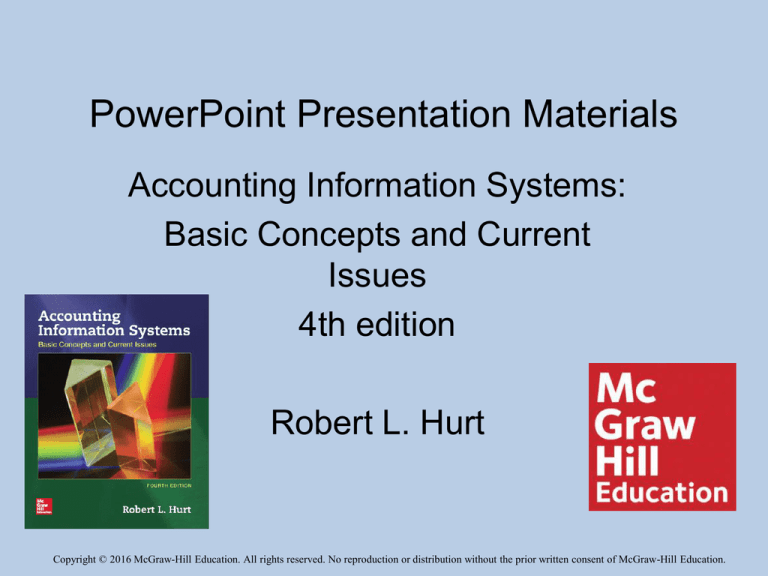
PowerPoint Presentation Materials
Accounting Information Systems:
Basic Concepts and Current
Issues
4th edition
Robert L. Hurt
Copyright © 2016 McGraw-Hill Education. All rights reserved. No reproduction or distribution without the prior written consent of McGraw-Hill Education.
Chapter 1
Role and Purpose of Accounting
Information Systems
Copyright © 2016 McGraw-Hill Education. All rights reserved. No reproduction or distribution without the prior written consent of McGraw-Hill Education.
Outline
• Learning objectives
• Definition of AIS
• AIS importance
• AIS generic structure
• Information literacy
1-3
Learning objectives
1. Define “accounting information systems.”
2. Discuss why AIS is an important area of
study for future accountants.
3. Compare and contrast AIS with other areas
of accounting.
4. Explain the structure of most AIS.
5. Locate and evaluate information sources on
AIS.
1-4
Definition of AIS
An accounting information system is:
– A set of interrelated activities, documents and
technologies
– Designed to collect data, process it and report
information
– To a diverse group of internal and external
decision makers in organizations
1-5
Definition of AIS
• Activities
– Business processes
•
•
•
•
•
Sales / collection
Acquisition / payment
Conversion
Financing
Human resource
– Accounting cycle steps
• Documents
– Purchase orders
– Remittance advices
• Technologies
– General ledger
software
– ERP systems
Which steps in the accounting
cycle do you recall from
previous study?
1-6
Definition of AIS
• Data
– Stacks of sales
invoices
– Receipts for the
payment of rent
• Information
– General purpose
financial statements
– Cost variance analysis
• Decision makers
– Management (internal)
– Shareholders
(external)
• Organizations
– For profit (Microsoft)
– Not for profit (Red
Cross)
– Governmental (State
of California)
1-7
AIS importance
• Developing a strong AIS helps achieve some
of the components of the FASB Conceptual
Framework of Accounting
Figure 1.1
1-8
AIS importance
Broad business perspective
competencies
• Studying AIS helps
students develop many
of the core
competencies
suggested by the
American Institute of
Functional
competencies
Personal
competencies
Certified Public
Accountants
1-9
AIS importance
• Acquiring knowledge about AIS helps
students learn more about common
business processes
– Sales / collection process
– Acquisition / payment process
– Conversion process
– Human resource process
– Financing process
1-10
AIS generic structure
Internal control
Input
Process
Output
Storage
1-11
AIS generic structure
• Inputs: source documents
• Processes: steps in the accounting cycle
• Outputs: general purpose financial
statements
• Storage: customer master file
• Internal controls: separation of duties
1-12
Information literacy
• Sometimes called “information competence”
• The ability to find, evaluate, use and
communicate information in all of its various
formats
1-13
Information literacy
UMUC criteria for evaluating information
– Authority: Who created it? Why?
– Accuracy: Is the source identified? Is the
information accurate?
1-14
Information literacy
UMUC criteria for evaluating information
– Objectivity: Does it include advertising? Is it
available freely?
– Currency: How old is the information?
– Coverage: Does the information have
sufficient depth?
1-15
1-16


